DL30 Series System Configuration Example
Centralized monitoring
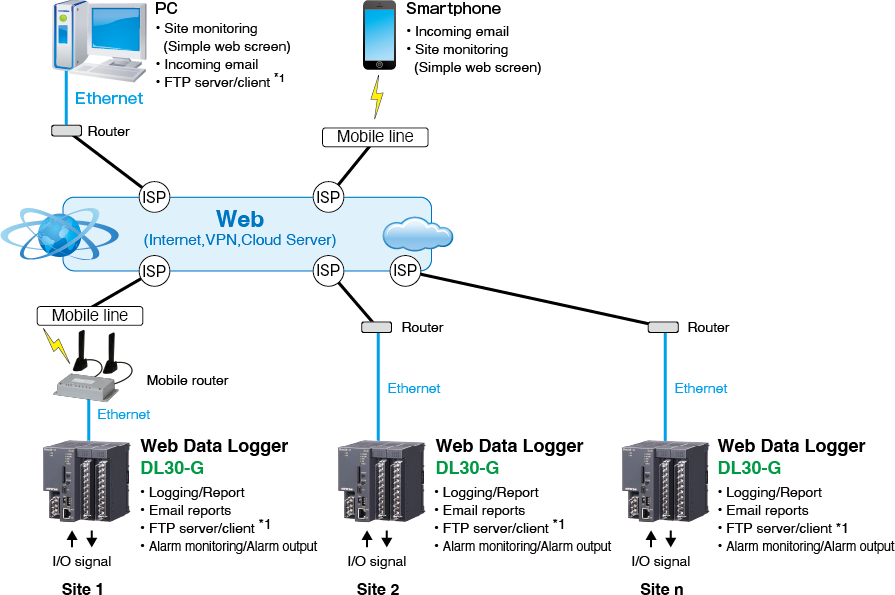
Site monitoring requires the registration of a fixed IP address or the use of dynamic DNS.
*1. FTPS supported.
Commentary
- A web monitoring system that uses the Internet.
- It can be accessed from terminals, such as PCs and smartphones.
- In case of abnormality, you will be notified by email.
- Email is sent with the current value and report data attached.
- You can use a PC over the FTP to acquire CSV files of logs and reports created by the DL30-G.
- You can use a PC and browser to monitor data collected by the DL30-G and download CSV files.
Small area monitoring with 900 MHz band multi-hop wireless equipment
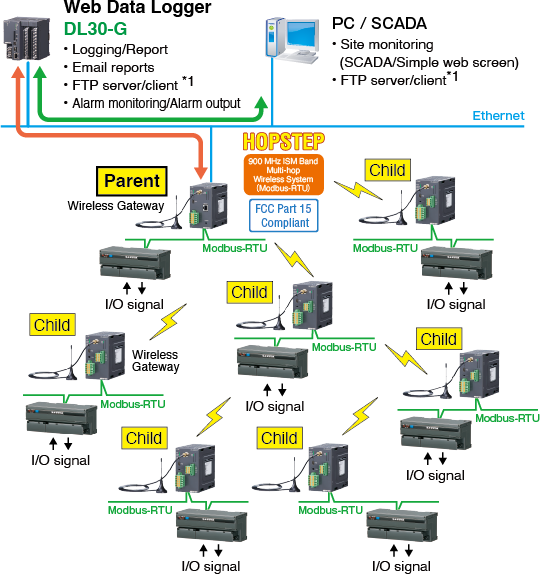
*1. FTPS supported.
Commentary
- The easy-to-build, economical wireless system collects sensor signals by combining the DL30-G and a 900 MHz band multi-hop radio.
- Single- to multi-point signals from remote locations where wiring is difficult can be easily captured in a wireless network.
- The DL30-G can log the data collected wirelessly. (Orange line ↔)
- You can use a PC and browser to monitor data collected by the DL30-G and download CSV files. (Green line ↔ ).
Please check the data sheets for the availability of the wireless products in your country.
Standalone
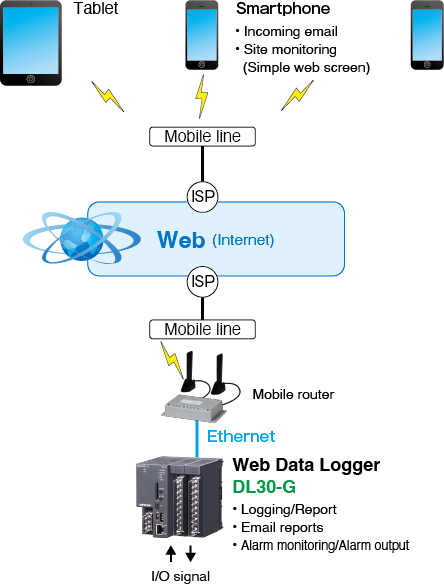
Site monitoring requires the registration of a fixed IP address or the use of dynamic DNS.
Commentary
- This is a simple configuration example in which the DL30-G is installed on-site and monitored with a tablet or smartphone.
- You can check trend graphs, event logs, and report screens on a smartphone browser.
- You can grasp the on-site situations by inserting and sending the current value via email on a regular basis.
- The DL30-G monitors analog signals and contact signals and alerts you by email if an abnormality occurs.
Centralized monitoring by SCADA
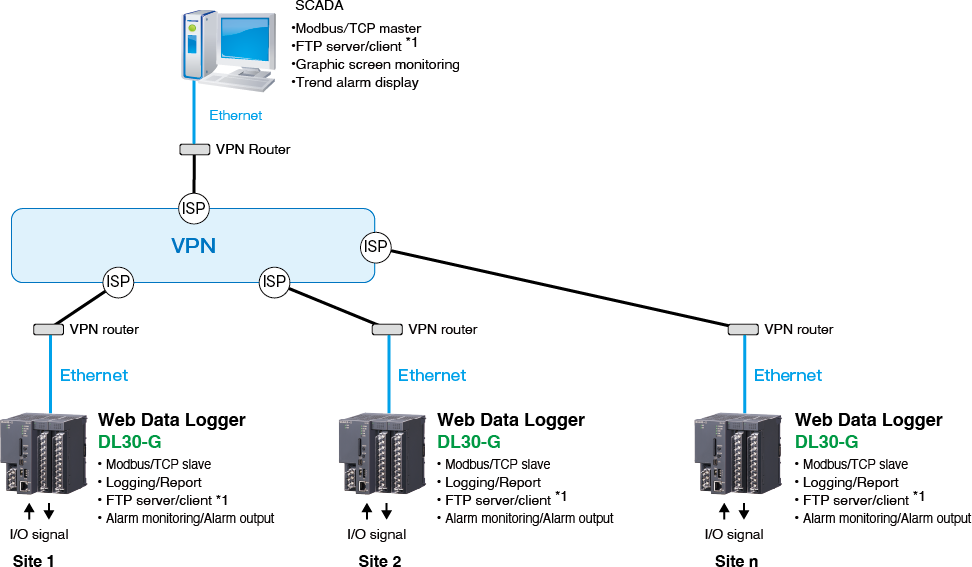
*1. FTPS supported.
Commentary
- This is a centralized monitoring system over the VPN.
- You can monitor multiple DL30-Gs at once with a PC (with SCADA software).
- You can monitor the current value in real time over the Modbus/TCP communication.
- The DL30-G creates logging data even if the communication is lost, and missing data can be supplemented at the time of recovery.
- You can acquire logs and report files created internally by DL30-G over the FTP.
Modbus/TCP master, SLMP master
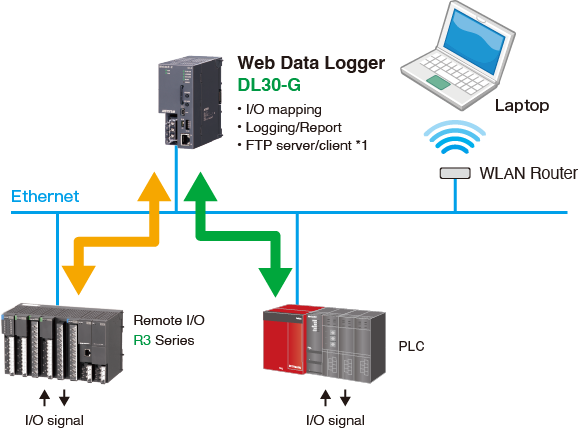
SLMP: Short for Seamless Message Protocol (a common protocol realizing seamless connections between CC-Link IE and Ethernet products)
*1. FTPS supported.
Commentary
- The DL30-G as a Modbus/TCP master and as an SLMP master simultaneously collects data from Remote I/O and PLCs, respectively.
- Data to be collected can be monitored on a PC’s web screen over the wireless LAN.
- Remote I/O data can be transmitted to PLCs using the I/O mapping function.
- Collected data is saved as logging files and report files (in CSV format).
- You can use a PC and a wireless LAN to download CSV files saved by the DL30-G.
IP telemeters (I/O mapping)
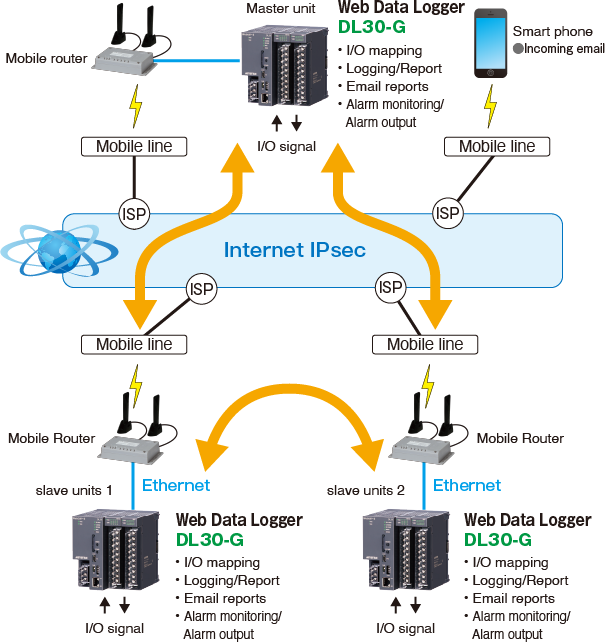
Dynamic DNS is required for IPsec.
Commentary
- The DL30-G master and slave units as IP telemeters share data and exchange I/O signals.
- Not only the master and slave units but also slave units 1 and 2 can communicate.
- The DL30-G master unit monitors the alarm and sends the alarm output to the other DL30-G in the system to turn the contact output ON.
- You can also send an email if an alarm occurs or communication with the other station is abnormal.
- Data collected by the DL30-G master unit is saved as logging files and report files (in CSV format).

